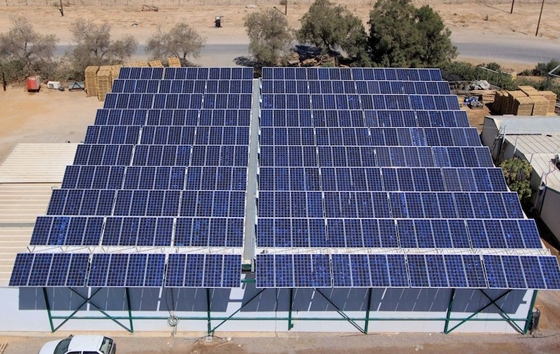Figures issued by the International Renewable Energy Agency (IRENA) and the Renewable Energy Policy Network for the 21st Century (REN21) show that the installed renewable energy capacity in Lebanon stood at 283.5 megawatts, the seventh highest capacity among 21 countries in the Middle East & North Africa region and the third highest among eight net oil-importing countries in the region.
Lebanon accounts for 1.5% of the MENA region's aggregate installed renewable energy capacity of 19,383.2 megawatts, as well as for 9.7% of the total installed renewable energy capacity among net oil importers of 2,918.4 megawatts.
Regionally, Lebanon's installed capacity is lower than Iran's capacity of 9,612.3 megawatts, Egypt with 3,385 megawatts, Morocco with 2,071 megawatts, Iraq with 1,867.5 megawatts, Syria with 1,151.8 megawatts, and Israel with 309 megawatts. Also, Lebanon's installed capacity is lower than that that of Morocco and Israel among net oil importers.
The distribution of Lebanon's installed renewable energy capacity shows that hydropower represents 282 megawatts or 99.5% of total installed capacity, followed by solar energy with one megawatt (0.3%) and wind energy with 0.5 megawatt (0.2%). The installed hydropower energy capacity in Lebanon accounts for 1.6% of the MENA region's aggregate hydropower capacity and is the sixth highest share in the MENA region.
It is lower than that of Iran's hydrocarbon capacity of 9,500 megawatts (53.8%), Egypt with 2,800 megawatts (15.9%), Iraq with 1,864 megawatts (10.6%), Morocco with 1,745 megawatts (9.9%) and Syria with 1,151 megawatts (6.5%). Also, the installed hydropower energy capacity in Lebanon accounts for 13.4% of total installed capacity among net oil importers, the second highest share in the region after Morocco’s share of 82.7%.
Further, the installed solar energy capacity in Lebanon is the third lowest in the MENA region, similar to the capacity installed in Palestine and higher than Syria’s capacity of 0.84 megawatt and that of Oman of 0.7 megawatt. Also, Lebanon is among eight countries in the region that have installed wind energy. But it has, along with Bahrain, the lowest installed capacity among them.
Lebanon aims to produce 12% of its overall energy production through electrical and thermal energy by 2020. In parallel, the installed solar water heating capacity in Lebanon totals 245 megawatts thermal and accounts for 3.9% of the MENA region's aggregate capacity of 6,296.5 megawatts thermal.
Lebanon's installed solar water heating capacity is the fourth lowest in the region, and is higher than the capacity of Malta with 36 megawatts thermal, Algeria with 0.21 megawatt thermal, and Libya with 0.021 megawatt thermal. Also, Lebanon's total collector area, or the area that intercepts solar radiation, is 350,000 square meters and accounts for 3.9% of the region's aggregate area of 8,994,935 square meters. Lebanon's collector area is the fourth lowest in the MENA region, similar to Morocco's area, and bigger than that of Malta with 51,360 square meters, Algeria with 300 square meters and Libya with 30 square meters. There are 12 manufacturers of solar water heating equipment in Lebanon, in addition to 100 retailers and 105 installers.
Lebanon aims to produce 12% of its overall energy production through electrical and thermal energy by 2020. Also, Lebanon aims to produce between 115 megawatts and 165 megawatts from renewable energy sources by 2015, as well as to increase production to between 455 megawatts and 565 megawatts by 2020. Further, Lebanon aims to have 1.05 million square meters of collector area by 2020.
Lebanon was one of 14 countries in the MENA region and one of the eight oil-importing economies that have a renewable energy strategy or plan; as well as one of seven countries in the region to have a net metering system for renewable energy.
Source: IRENA, REN21, Byblos Research
7 August
























































